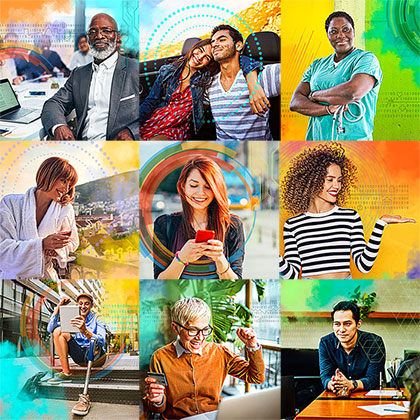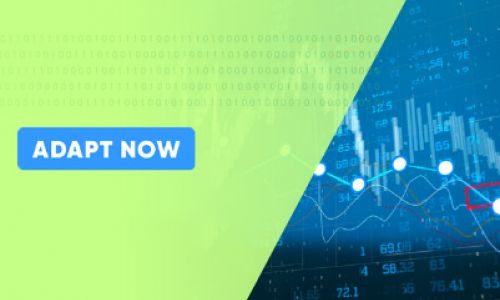Contact centres and other types of businesses are adapting to a new reality where a large proportion of employees are working from home while some are preparing to return to brick-and-mortar offices. At the same time, companies need the agility to quickly shift operations in response to seasonality, spikes in customer volume, natural disasters, and other developments. So, how can contact centres build a resilient culture, set expectations, and maintain employee well-being under such volatile conditions?
On a recent webinar, “Overcoming the challenge of distributed workforces after COVID-19,” I discussed this topic and more with Guy Clapperton, senior writer at Intelligent Sourcing, Jo Regan-Iles, executive director of human resources, EMEA, at TTEC, and Peter Ryan, principal at Ryan Strategic Advisory. Here are the key takeaways from our discussion.
Driving change beyond crisis management
At the onset of the pandemic, contact centre associates understood the need to shift to remote work. But operating in crisis mode is one thing, and recruiting, onboarding, managing, and retaining distributed workforces on an ongoing basis is another.
“We're facing some very serious issues in terms of managing the direction in which labour is going to go, or the talent is going to go in the contact centre,” Clapperton noted.
Additionally, new jobseekers or associates who prefer to work in a brick-and-mortar contact centre may be turned off at the prospect of working remotely on a permanent basis, Ryan said. While unemployment rates may be high at the moment, “the reality is that people understand that they have choices,” he said. “They can potentially work for company B or do something on their own in an entrepreneurial fashion. But the key is, if we are as an industry going to attract the best people and keep them, we've got to make sure that the culture is representative of who they are, not what we think they should be.”
Communication is key
Based on TTEC’s decades of experience managing distributed workforces, “continued communication” between executive leaders, managers, and front-line associates is a critical part of fostering a culture that is representative of the company’s employees and where they feel engaged and motivated, Regan-Iles said.
A 24-hour advice line, team huddles, informal chat groups and Zoom happy hours, sharing photos of children and pets, and online contests are just some of the activities that help keep employees engaged. “From a HR operations point of view, that means making sure that we’re constantly communicating, working together, and supporting our employees’ well-being,” she said.
Collaborative tools and video platforms are critical in enabling employees to stay in touch and communicate almost as easily as they would if they were working together in the same office, Regan-Iles noted. In the end, it’s about doing the same thing—communicating with your colleagues—differently, she said.
Strong experiences begin with CultureCX
The need for digital platforms and tools that enable employees to collaborate wherever they are, not to mention support customers, underscores the importance of a digital transformation. As the pandemic has made abundantly clear, a digital transformation is not optional.
But a digital transformation is not something to be bolted on, it needs to start with culture. Case in point: CultureCX, a holistic mentality that encapsulates TTEC’s approach to recruiting and retaining talented employees that includes a digitised employee experience, gamified career paths, an energising work environment, and more.
There are myriad ways that CultureCX imbues our employee experience and approach to digital. For example, we’re redesigning our contact centres to make them even more comfortable where employees are equipped with wireless headsets to move around and can make use of our game rooms and meditation rooms, among many other perks.
Additionally, we developed a bot called “Louie” using our own technology. Louie is an intelligent virtual assistant that helps with onboarding and training as it manages the employee’s career journey and is available 24/7. Louie also powers our Gamified Career Path and on the marketing side, greets customers on our website and helps them find what they’re looking for. The key part about Louie is he’s a friendly, accessible bot that makes mundane tasks—onboarding, training, locating information—engaging and effortless. In other words, people need onboarding information, they need to be trained and Louie reflects our belief that if you can do that in an easy, co-operative manner, then you're going to keep people engaged.
Futureproofing the contact centre
It’s unquestionable that the future is digital and organisations will have to think carefully about whether they want the majority of their employees to work remotely, in the office, or a mix of both and what the digital requirements will be.
“But here’s the thing, there's no right or wrong answer on this,” Ryan noted. “It’s very dependent on the organisation and the culture that they want to partner with (e.g., a CX partner that can provide at-home employees).” Certainly, there will be public regulations to consider, he continued, but regardless of whether individuals are working solely at home or migrating back and forth from the contact centre, “we have to engage individuals so that they want to come to work and give their best every single time.”
Watch “Overcoming the challenge of distributed workforces after COVID-19,” on demand here.






